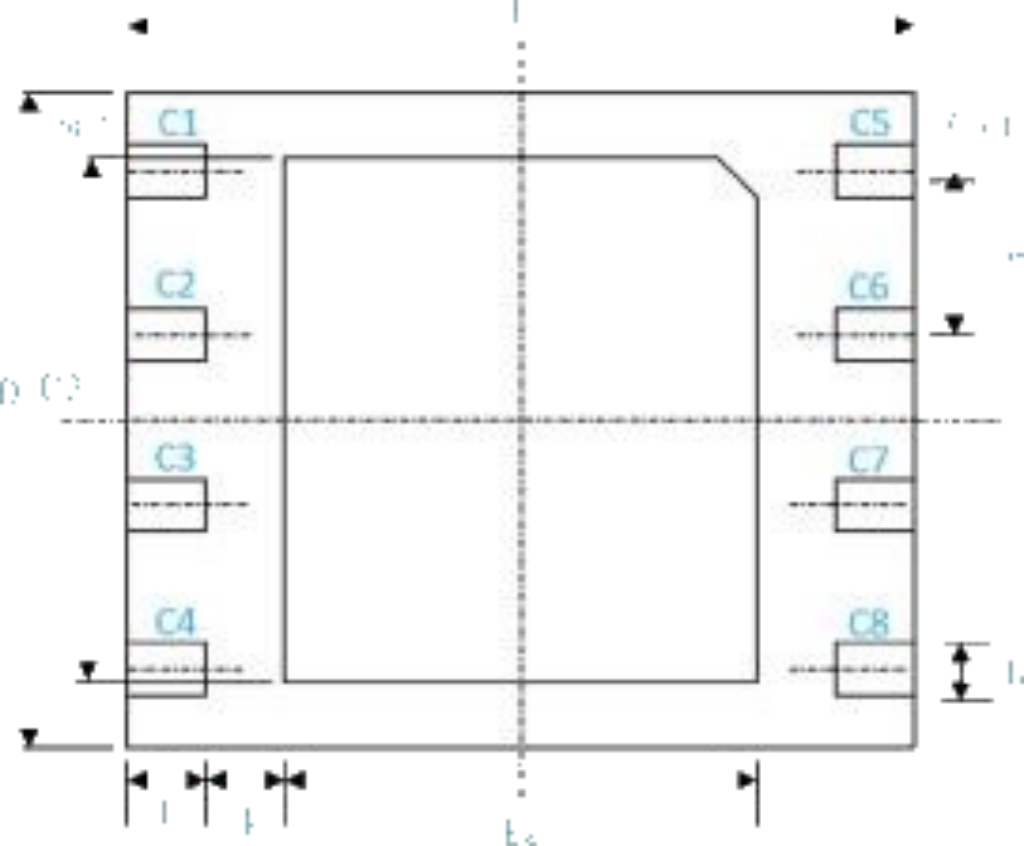SIM on chip or eSIM cards do the exact same job as a normal IoT SIM card. Neverthelesss, eSIM cards are permanently stored inside a device. An eSIM is usually attached by soldering to the PCB. eSIMs prevent people from tampering with the device or changing the device it sits in. This helps enhance the security and durability of the solution. These eSIM cards are compatible with most IoT devices and akorIoT PCBs. They offer a better temperature range and they are non sensitive aggainst vibration. eSIMs support NB-IoT, LTEM, GSM, UMTS and LTE.
If you run a company then do not hesitate to ask for eSIMs or standard IoT SIM cards with harald.naumann (at) lte-modem.com
Dimensions of the eSIM from the bottom side
| Package pin | UICC contact | Package pin | UICC contact |
| 1 | C5 | 8 | C1 |
| 2 | C6 | 7 | C2 |
| 3 | C7 | 6 | C3 |
| 4 | C8 | 5 | C4 |
Software features of the eSIM
- Java Card 3.0.4
- 3GPP Release 8+
- GlobalPlatform 2.2
- OTA
- OTA over SMS / AES ciphering
- OTA over CAT-TP
- OTA over https / GP2.2 AmdB (optional)
- Remote File Management (RFM)
- Remote Applet Management (RAM)
- Authentication applications
- SIM, USIM, ISIM, EAP
- Authentication algorithms
- Comp128 2&3, Milenage, TUAK
- Cryptographic features for OTA
- CRC16, CRC32
- DES, 3DES, AES 128/256 bits
- HTTPs OTA
- Java Card™ Cryptographic APIs
- CRC16, CRC32
- DES, 3DES, AES 128/256 bits
- Low Power Network R12/R13 features
- Poll Interval Negociation
- User memor:128 kB
Hardware features of the eSIM
- Hardware 3DES, AES (128,192,256-bit)
- Supply voltages range: Class A,B,C (1.8V – 5.0 V +-10%)
- Memory Endurance: Up to 500,000 Cycles
- Ruggedized Form Factor: MFF2
IIoT specific features
- Temperature Range: Operating -40°C +105°C
- Data Retention: Up to 10 years
- ETSI TS 102 671 compliancy
- MFF2: TB-MA-HA-CA-VA-SA-RA-UB

1 Comment
Add a Comment